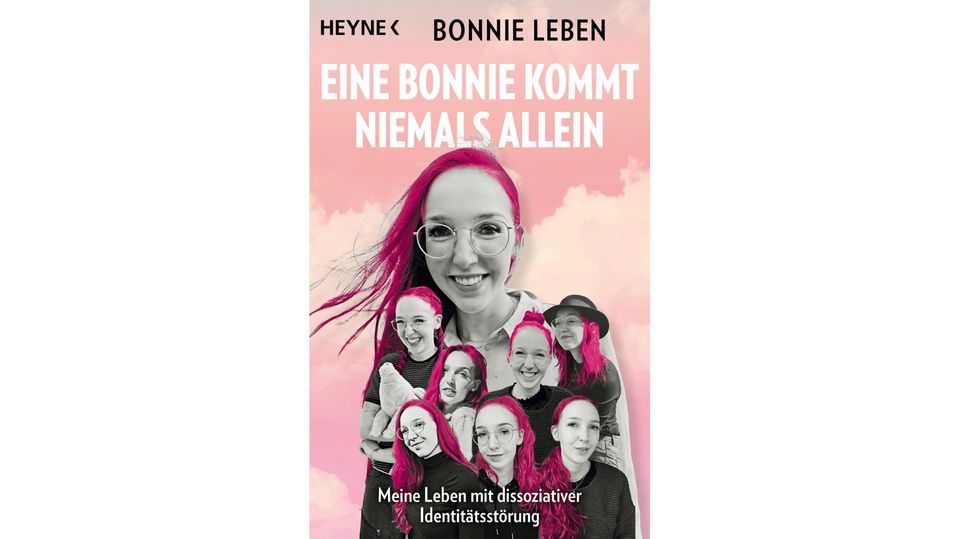Many identities share one body. What sounds like science fiction is reality for some people, including the Bonnies. They suffer from “dissociative identity disorder”. Four of them told us their stories.
recorded by Leonie Zimmermann
Who doesn’t know them, the inner voices that like to speak up, especially before important decisions – and represent completely opposing views. We all have different personality traits that don’t always pull together. But what if the whole thing isn’t just happening in our heads, but is so pronounced that we consist of several distinct personalities? Then we speak of a “dissociative personality disorder”. Identity disorder“. But what is it like to be many?
The Bonnies know this very well, they have “dissociative identity disorder” and speak up Social-Media about how this shapes their lives. They don’t know how many Bonnies there are – a new character always comes to the fore. But the whole thing only becomes really tangible when you get to know a few of them, when you hear them speak and see that there are really different characters living in one person. Four of the Bonnies have taken us exclusively into their world of thoughts. In the next few days we will learn TessaIsa, Fiona and 46 get to know each other a little better. This time it’s Isa’s turn.
I’m Isa and I’m 20 years old. That means that in the last few years I’ve always been a little bit younger than my body, which is 24 years old, and then I’ve aged with it. I don’t really know how I’m doing most of the time, I don’t have a feeling for it. That’s because I’m only there for a few moments and I can’t remember the time when I’m not there at all. I think I’m doing quite well, though. Although I’ve always carried a lot of sadness inside me, from all of us. That means I cry a lot, but I can also have very intense positive feelings, which has something healing about it for all of us.
For me, being many is not at all tangible, it never was. I have always been solely responsible for everyday life. At school I was actually mostly in my body, and for a long time in my youth in my free time too. I thought the life I led back then was everything. I didn’t realise that there were also times that I didn’t experience. But I found some crazy explanations for these gaps in time and convinced myself, for example, that I was sleeping or that I was just super forgetful. Ultimately, however, these were always the only signs of being many for me.
Injuries out of nowhere – right?
Well, apart from the hospital stay about two years before the diagnosis was made. Back then, overnight, we were torn from our seemingly dreamlike lives. A life in which, just a few days before, I celebrated my prom without any worries and lived a life that many others envied me for. At least that’s what I thought for a long time. That’s why I couldn’t explain my serious injuries in the hospital; neither the doctor nor I could figure out the cause. I stated at the time that I had harmed myself. I knew it was a lie – but I had no memory of what happened to me. All of this made me incredibly sad, without knowing any tangible reason for my tears. But deep down I already knew back then that my life wasn’t perfect.
It took another two years until we were diagnosed with “dissociative identity disorder” at the age of 18 in a trauma clinic. Until then, it was mostly everyday people like me who were outside. Being outside means that you control the body’s actions, so you are the main character in that moment. None of us had any idea of all the terrible things that had happened to us. I denied the diagnosis at first because I couldn’t imagine that there was so much inside me that I knew nothing about and had no access to. For a long time, I asked myself whether my life would not have been much easier if I had been so uncertain about being many, whether I would have been so happy.
I’m getting better at dealing with it now because it obviously explains a lot – not just the gaps in time, but also the pain, the physical limitations and the different handwriting in my diary. I still can’t grasp it properly – and I still have no access to the inner world. That means if I’m not in the body, then I’m just gone. It’s not even like I’m sleeping. I don’t notice this time at all. This sometimes takes a toll on me because I am a very emotional person and find time in my life so precious. I’ve had so many great experiences and actually like my life. But I know I don’t have it to myself. And if I’m not there, I don’t know when I’ll come back next time. I might be talking to you and having the time of my life and the next minute someone will replace me and I won’t be back for another two weeks. Or in two years. And these two years are a lost lifetime for me.
And to be honest, it also scares me that I don’t know what else is inside me that I don’t have access to. Getting the diagnosis and learning that I had been experiencing trauma for years and hadn’t noticed it, despite having injuries all over my body, was a shock. You have to understand that at the time when I was first told this, the traumatizing actions were still taking place. And I just didn’t get it. Instead, I maintained my illusion for as long as I could. So I sometimes wonder what else will come up over time that I don’t know about yet. Which memory of other people will knock me off my feet next? It unsettles me and sometimes drives me crazy. But I have now accepted it as my life.

Anxious, avoidant or secure: couples therapist explains how which attachment style develops
04:47 min
The difficult handling of trauma
I think many of us still think that we don’t have enough time in our lives to deal with all of our traumas. That means we have to set priorities – and that’s hard sometimes. But maybe that’s not the point. Maybe it’s more our job to build a life that creates a positive counterbalance and makes our past bearable. For example, I like to spend my time in nature. I’m outside a lot and try to soak up this life as often as possible. That’s my greatest need.
But I am not alone. That is why I hope that in the future the needs of people who have not been in the body so often will also be met. Unfortunately, it is just like that: when there are many of you, someone always gets left behind, you can never please everyone. Nevertheless, I hope that we continue to try to find a good balance. Fortunately, we have already partially achieved that, we are on the right track.

“A Bonnie never comes alone. My life with dissociative identity disorder”, Bonnie Life, will be published on May 24, 2024 by Heyne Verlag, 256 pages, 16 euros.
© Heyne Verlag
All the symptoms and memories have become more bearable as a result. The certainty that, looking back (on the outside), we were never alone with this gives me courage. We often felt lonely and overwhelmed, but we were never really alone. I think our first therapist saved our lives in that respect. Simply because she was there and helped me to understand what was going on inside me. And that is much more than you can imagine.
This report is the second part of a four-part series on the topic of “Dissociative Personality Disorder”. We believe that in order to even begin to understand what it feels like to be “many”, you should listen to more than just one of the personality parts. That’s why we’re letting four of the Bonnies have their say – and let them take us into their world. In the next part, we’ll meet Tessa. She’s only ten years old – and doesn’t quite understand all the adult stuff yet.
This is part two of the series.
You can find part one of the series here.
Part three of the series can be found here.
Part four of the series can be found here.

